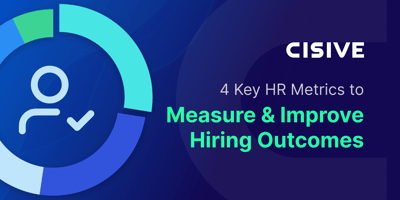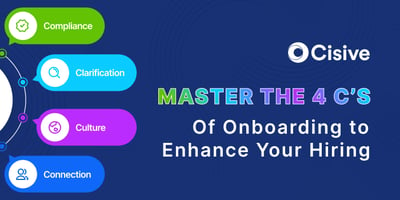

Without data, how will you ever really know whether your efforts are working? How can you...

Regardless of the quality of your product or your brand’s reputation, your hiring strategy may be keeping you from attracting qualified candidates.
A poor hiring strategy affects productivity and turnover and wastes time and money. It also prevents you from attracting and retaining the top talent in your industry. As a result, your company suffers from understaffing and hiring inefficiencies.
Below, we look at eight recruitment strategies for effective hiring. These strategies help you develop a more efficient process that leads to shorter hiring times and an overall better workforce.
Key TakeawaysHere are the key things you need to know about recruiting strategies:
|
A recruitment strategy is a structured approach that your company takes to source, screen, and hire qualified job applicants. The purpose of a solid strategy is to help you find and hire the right people for available positions.
By having a clear strategy in place and ensuring it’s fully documented for your whole company to see and use, you accomplish three goals:
You use a hiring strategy when you need to fill positions due to organizational growth, high turnover, or budgetary concerns. Hiring strategies are typically used by administrators in your company, including HR departments, recruiters, scouts, hiring managers, and executives.

In any project or objective, clarity leads to productivity. When everyone understands the strategy and knows their role in it, everything runs more smoothly. Conversely, ambiguity almost always leads to inefficiencies. Here, we outline the key benefits of creating and following a defined recruitment strategy.
If the best talent is going to your competition, it’s probably because their recruiting strategy is better, not because they’re a better company. They’ve figured out how to attract people quickly, get them in the door, and provide them with everything they need to be successful in the role.
If it’s taking too long to fill positions, you need to examine the process and find out why. Hiring delays kill your company's workflow and ultimately impact your revenue. Identify areas where you can improve hiring efficiency by adding automation or simplifying employee screening.
High turnover rates and coverage gaps are almost always a result of a poor hiring strategy. They occur because you’re not finding the right person for the role. The right hiring strategy helps you reduce turnover rates and eliminate coverage gaps.
One of the reasons your employees are not productive is because they’re not the right employee for the job. Implementing a good strategy prevents hiring people who don’t fit well in the role or in the company’s culture. In the long run, it improves productivity and leads to a more satisfying job experience for employees.

Now that you understand why the right hiring strategy is important, let’s look at eight ideas to help you get qualified candidates.
Establishing your company's brand showcases what makes your company unique and attractive to your target candidates. You create a positive reputation so that job seekers see you as their best opportunity for career advancement and longevity.
By highlighting your company culture, values, and benefits, you connect with potential team members who naturally align with these qualities. To get started, identify your brand's unique characteristics. Then, communicate them through various channels like your website, social media, and recruitment materials — everywhere prospective employees may see you.
Craft job descriptions that clearly and thoroughly outline the role. Include responsibilities, requirements, and expectations. An accurate job posting attracts qualified candidates and sets realistic expectations for both the candidate and the employer.
This strategy helps prevent misunderstandings and subsequent mismatches between your company and unqualified applicants. When drafting a post, gather input from relevant team members, such as immediate managers and coworkers connected to the role. Use clear language and include essential details like salary and benefits.
LinkedIn, Facebook and X (formerly Twitter) can put you in touch with potential candidates. You can use paid ads, pages, or newsfeed posts to attract and engage qualified passive job seekers. Use social media platforms to reach a broader audience and show up in front of candidates who may not know you exist.
Social media offers access to a large pool of candidates, as it fosters connections with talent not normally in your circles. Begin by creating compelling job postings. Share them on social media channels and actively engage with candidates through comments and messages.
Your next great hire might come from within your company’s walls. Looking for internal employee advancement opportunities sends a strong message that employees can grow and succeed in your organization. You can use internal hires to retain talent, boost morale and fill key roles with experienced individuals you already trust.
A great way to launch this sort of initiative is to assess skills and interests from existing employees. Communicate advancement opportunities company-wide and provide training and development programs. These sorts of opportunities help employees grow within your organization.
An uninviting or confusing career page on your website can hurt your company’s reputation and alienate potential job candidates. Improve your careers section so that it engages potential candidates through each step of your online application process. Make it easy for applicants to navigate from start to finish.
Review and update your current careers page, adding engaging content such as employee testimonials and videos. Include information about your company, which should highlight benefits, values, and culture. List all available job openings and instructions on how to apply. Most of all, keep the page current, adding and removing jobs as needed.
Why not organize or participate in an event where job seekers can meet you? Such events are a great way to facilitate face-to-face interactions between candidates and hiring managers. You can expose candidates to different career paths in your company. Plus, you can showcase your brand and highlight company culture and network as you go.
This strategy expedites the recruitment process and allows you to assess candidates in person to make better hiring decisions. When choosing an event, select a suitable venue. Promote the event through various channels, prepare informational materials, and be ready to engage with attendees.
If you know your target audience, you probably know where to find them. If so, you should keep a steady flow of communication through various channels both offline and online. Consistently reach out to potential candidates and nurture relationships. Consider an employee referral program.
This allows you to build a network of interested candidates who are more likely to apply for your job openings. You keep your company in the spotlight so people don’t forget you. This proactive approach saves time and resources in the long run.
HRM software allows you to streamline and automate your HR tasks. It streamlines functions in areas like recruitment, payroll, and employee management.
Companies like Cisive offer applicant tracking systems, candidate assessment tools, and onboarding platforms. Use our tools to post jobs, screen resumes, and manage your interview process.
With Cisive, the hiring process is efficient and error-free. You can automate repetitive tasks and centralize your recruitment data. Start by exploring our software options. Assess their features and compatibility with your existing systems, and implement the chosen solution.
These eight tips will help you to fine-tune your hiring strategy to secure top talent. The key here is implementing methods that improve applicant engagement and create a positive application process.
Leveraging multiple marketing channels and HRM software solutions creates a more efficient system and increases the productivity of your hiring team while minimizing coverage gaps.
Cisive’s HRM software offers a wide range of tools you can use to automate and streamline your hiring strategy. Let us help you simplify your approach and make your recruiting process more effective than ever. Speak with a Cisive expert or fill out our online form to get started.

Without data, how will you ever really know whether your efforts are working? How can you...

This article addresses how long a background check for employment takes and what this type of...

The 4 C’s of onboarding help companies minimize costs associated with new hire training by...